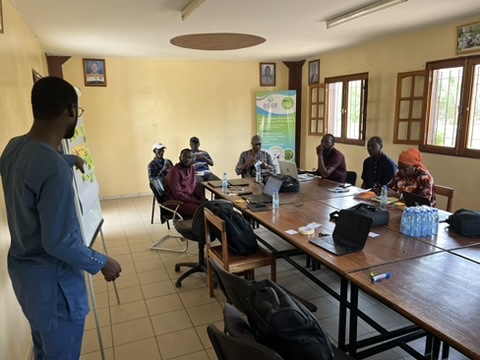Introduction
With the Centre de Gestion et d'Économie Rurale (CGER), located in the heart of the Senegal River Valley, we have co-written a story of digital transformation that goes beyond digital solutions to touch on the organisation itself.
In Part I, we shared our diagnosis and proposed strategy.
In Part II, we described the implementation and importance of an internal focal point (RSI).
Today, we conclude this series with a dual perspective: measuring the real impact on the ground and sharing the Kaikai methodology, a reproducible blueprint for any organisation ready to take the digital leap.
Concrete results: the impact in figures
 The final evaluation, conducted in August 2025, was based on a mixed approach combining:
The final evaluation, conducted in August 2025, was based on a mixed approach combining:
quantitative data (Microsoft 365 usage, meeting frequency, volume of synchronised files), and
qualitative elements from interviews and field visits to the four regional branches.
This methodology made it possible to measure both technological adoption and human perception of change.
70% of users active on Microsoft 365 → adoption rate measured in August 2025, proof that the majority of staff have embraced the tools;
134 online meetings held over the last 12 months (September 2024 – August 2025) → enhanced collaboration and savings in time and fuel;
+ 2,000 files secured and centralised on SharePoint and OneDrive (cumulative total as of August 2025);
23 training sessions (6 group and 17 individual) organised between 2023 and 2025, enabling all agents to gradually improve their skills.
"Before, we had to travel to share a document. Now, I put it on SharePoint and everyone has instant access to it," says an agent at the CGER in Richard-Toll.
The director of CGER Vallée adds: "Online meetings have enabled us to reduce travel and fuel costs, which almost covers the cost of the licences."
The evolution of the CGER's digital maturity between 2021 and 2025 clearly illustrates this progress:
These results reflect a profound change in practices: digitalisation is no longer a concept, but a reality experienced on a daily basis.
Overcoming Structural Challenges: Our Approach in the Field
The CGER's digital transformation took place in a context marked by several structural constraints:
Connectivity remains uneven in some rural areas of the Senegal River valley.
Geographical and climatic conditions sometimes complicate travel, particularly during the rainy season.
A lack of digital literacy required additional support to facilitate the adoption of new tools.
To address these challenges, Kaikai's approach was to:
Deploy solutions that can operate offline and synchronise automatically.
Strengthen remote collaboration through Teams, Outlook and SharePoint, reducing dependence on physical travel.
Organising group and individual training sessions to gradually develop digital literacy and ensure that every employee finds their place in the digital transition.
Relying on an Information Systems Manager (ISM), recruited as an internal focal point, to provide daily operational support and act as Kaikai's liaison with agents to ensure the continuity of the process.
This pragmatic approach demonstrates that successful digitalisation depends as much on taking the local context into account as on the technology itself.
Our blueprint for sustainable transformation
From this experience, we have consolidated a methodology that can be applied to other organisations:
An internal champion: The CGER's CIO played a decisive role. His presence on site enabled close support and continuity after our withdrawal.
Intelligently chosen tools: Microsoft 365 was selected because it capitalises on existing knowledge (Excel) while offering modern features. Registering the CGER as a non-profit organisation resulted in a 70% reduction in licence costs.
An ecosystem vision: The next step is to integrate accounting systems with Microsoft 365 to streamline exchanges and reduce duplication.
Data valorisation: Staff will be trained in Power BI to transform the data collected into strategic analyses useful for advocacy, donors and members. In addition, a dashboard has been set up with Power BI to enable continuous monitoring of KPIs even after the end of the project.
Prospects for the CGER and beyond
The CGER experience paves the way for other prospects:
Integrating member cooperatives into the digital ecosystem via guest access for real-time data collection.
Extending this approach to other agricultural networks or rural organisations facing the same challenges.
Making digitalisation a lever for competitiveness and transparency for local organisations in West Africa.
Conclusion: an inspiring success story
The CGER's journey illustrates the value of gradual, participatory and human-centred transformation. The benefits are tangible: transparency, efficiency and enhanced collaboration. But the greatest success lies elsewhere: a digital culture is beginning to take root in practices.
At Kaikai, we believe that every organisation can write its own transformation story.
If your organisation faces similar challenges (geographical dispersion, lack of data centralisation, modernisation needs), our co-construction approach, based on a human-centred approach, can support you towards a realistic and sustainable digital transformation, tailored to your ambitions.